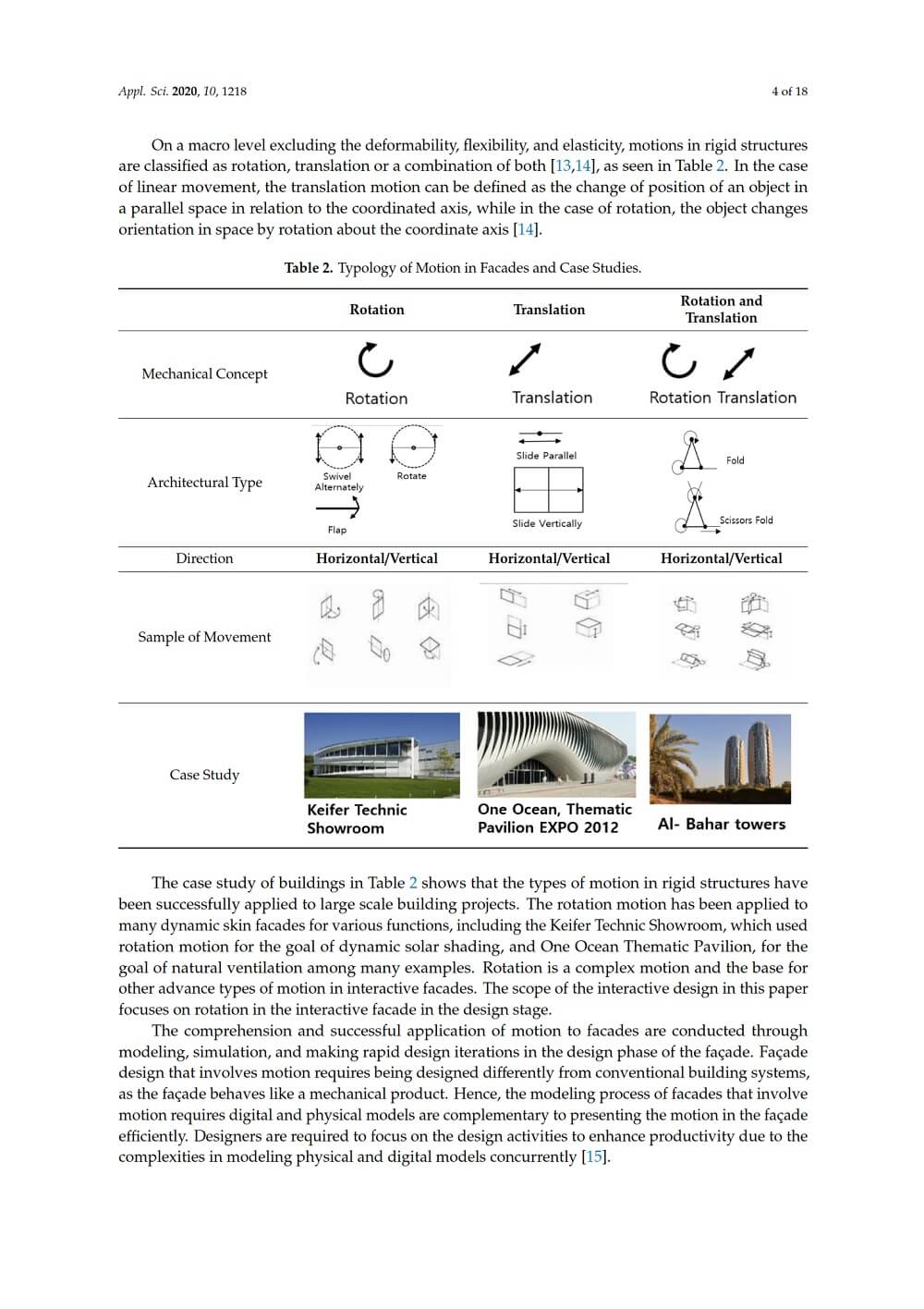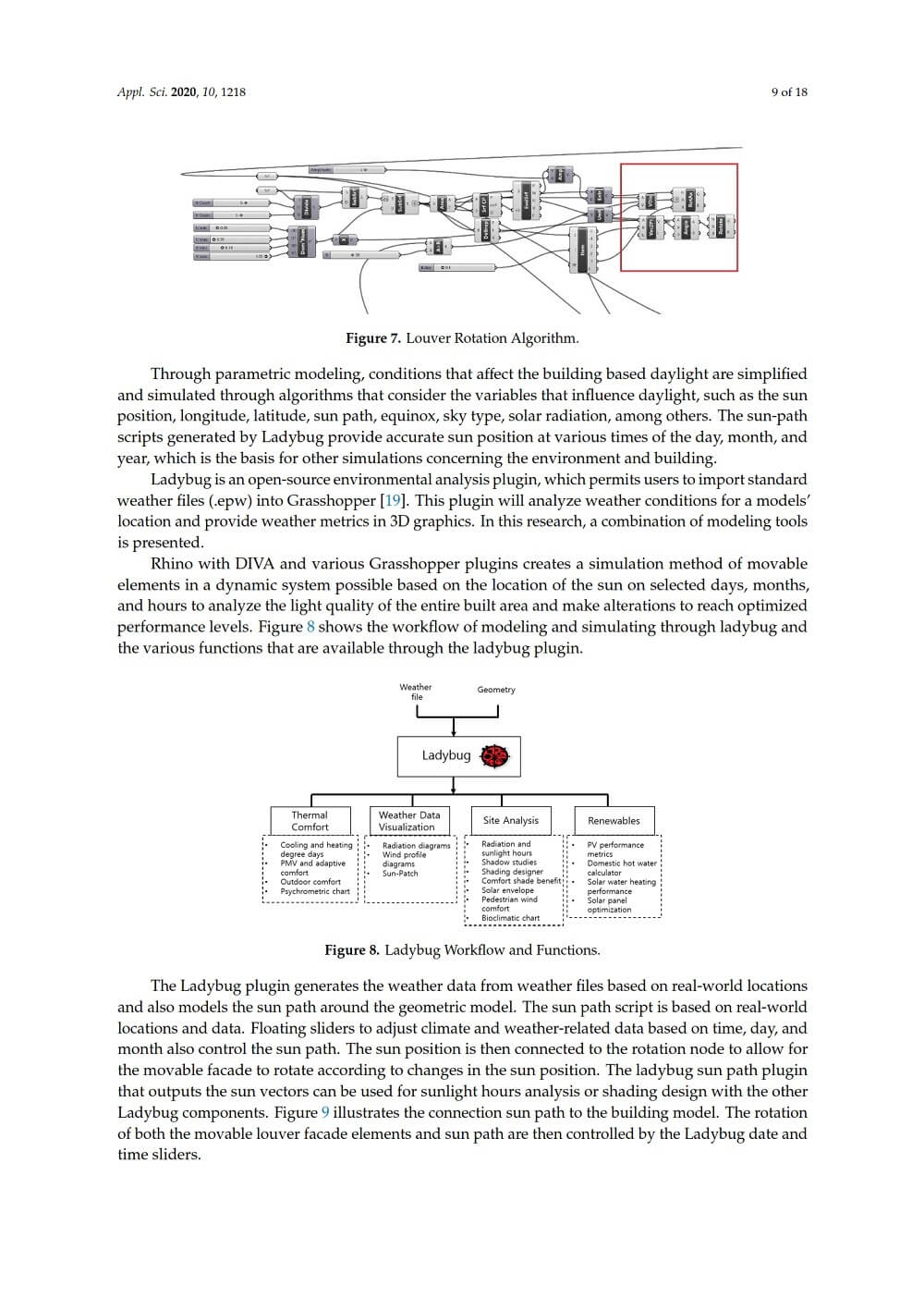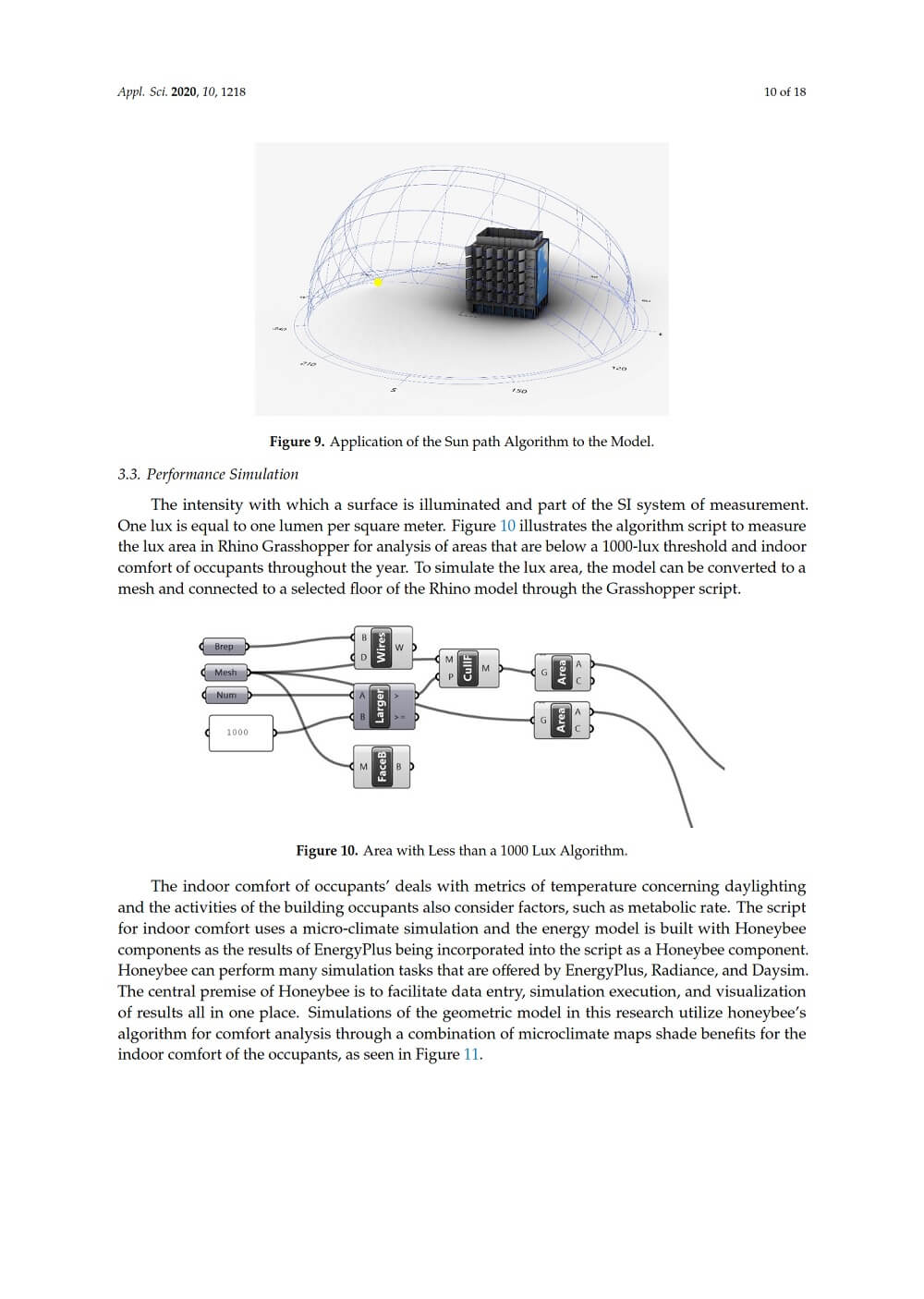Interactive Facades

Interactive facades are dynamic in the translation of space in architecture, especially in the aspects of aesthetics, sustainability, adaptation to the environment, and data relay through the medium of light, motion, and embedded technology. The design of interactive facades is complicated and it requires time and effort in the comprehension of the internal functions of the facade from the conceptual stage to occupancy. The existing process of modeling the experimental level of interactive facades through mock-up and prototype models demonstrate a fragmentary outline on which the final development of the interactive façade system is based on.

This research by David Stephen Panya, Taehoon Kim and Seungyeon Choo aims to analyze the motion aspect of interactive facades design and simplify the conceptual and performance design process through parametric strategies using a multi-hybrid of parametric and simulation tools, such as Rhino Grasshopper, Ladybug, and Daysim, to create interactive facade designs that can verified in a virtual reality environment while generating performance outcomes that can be optimized in a holistic and improved efficient process.





























Comments